Keynote Speakers
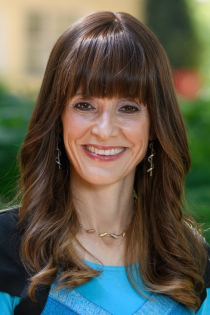
Yonina Eldar, Weizmann institute of Science, Israel
Biography: Yonina C. Eldar is a Professor in the Department of Math and Computer Science at the Weizmann Institute of Science, Rehovot, Israel, where she heads the Center for Biomedical Engineering and Signal Processing. She is also a Visiting Professor at MIT and at the Broad Institute and an Adjunct Professor at Duke University, and was a Visiting Professor at Stanford University. She is a member of the Israel Academy of Sciences and Humanities, an IEEE Fellow and a EURASIP Fellow. She has received many awards for excellence in research and teaching, including the IEEE Signal Processing Society Technical Achievement Award, the IEEE/AESS Fred Nathanson Memorial Radar Award, the IEEE Kiyo Tomiyasu Award, the Michael Bruno Memorial Award from the Rothschild Foundation, the Weizmann Prize for Exact Sciences, and the Wolf Foundation Krill Prize for Excellence in Scientific Research. She is the Editor in Chief of Foundations and Trends in Signal Processing, and serves the IEEE on several technical and award committees. She heads the Committee for Promoting Gender Fairness in Higher Education Institutions in Israel.
Title of keynote talk: Communication and Sensing: From Compressed Sampling to Model-based Deep Learning
Abstract: The famous Shannon-Nyquist theorem has become a landmark in analog to digital conversion and the development of digital signal processing algorithms. However, in many modern applications, the signal bandwidths have increased tremendously, while the acquisition capabilities have not scaled sufficiently fast. Furthermore, the resulting high rate digital data requires storage, communication and processing at very high rates which is computationally expensive and requires large amounts of power. In this talk we consider a general framework for communication and sensing including sub-Nyquist sampling, quantization and processing in space, time and frequency which allows to dramatically reduce the number of antennas, sampling rates, number of bits and band occupancy in a variety of applications. Our framework relies on exploiting signal structure, quantization and the processing task in both standard processing and in deep learning networks leading to a new framework for model-based deep learning. It also allows for the development of efficient joint radar-communication systems and near-field processing. We consider applications of these ideas to a variety of problems in wireless communications, imaging, massive MIMO systems, automotive radar and ultrasound imaging and show several demos of real-time prototypes including a wireless ultrasound probe, sub-Nyquist automotive radar, cognitive radio and radar, dual radar-communication systems, analog precoding, sparse antenna arrays, and a deep Viterbi decoder. We end by discussing more generally how models can be used in deep learning methods with application to a variety of communication settings.
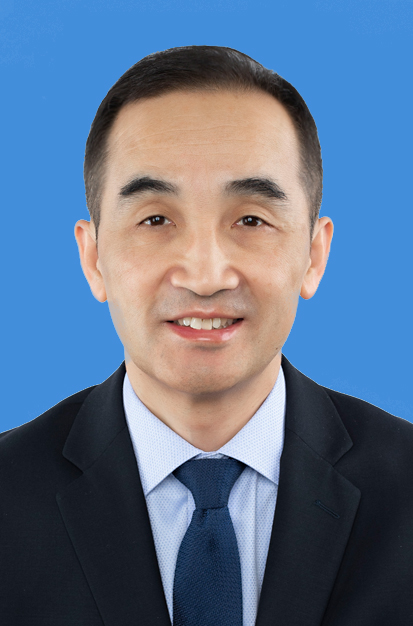
Tom Luo, CUHK-Shenzhen, China
Biography: Zhi-Quan (Tom) Luo is the Vice President (Academic) at The Chinese University of Hong Kong, Shenzhen where he has been a professor since 2014. He is the Director of Shenzhen Research Institute of Big Data and also the Chinese University of Hong Kong (Shenzhen)-Shenzhen Research Institute of Big Data-Huawei Innovation Laboratory of Future Network System Optimization. He completed his Ph.D. at the Massachusetts Institute of Technology and his undergraduate studies at Peking University, China. His research interests lie in the area of big data, signal processing and digital communication, ranging from theory to design to implementation. He has served on more than forty conference and workshop program committees and been the Chair of the IEEE Signal Processing Society Technical Committee on Signal Processing for Communications (SPCOM). He was the Editor in Chief for IEEE Transactions on Signal Processing from 2012 to 2014 and served as the Associate Editor for many internationally recognized journals. Currently, he is the Fellow of the Institute of Electrical and Electronics Engineers (IEEE) and the Society for Industrial and Applied Mathematics (SIAM). He was elected to Foreign Member of the Chinese Academy of Engineering (CAE) in 2021. He received the 2010 Farkas Prize from the INFORMS Optimization Society. He also received three Best Paper Awards from the IEEE Signal Processing Society in 2004, 2009 and 2011 respectively, and a 2011 Best Paper Award from the EURASIP. In 2014, he was elected to the Royal Society of Canada. In 2018, he was awarded the prize of Paul Y. Tseng Memorial Lectureship in Continuous Optimization.
Title of keynote talk: Learning to maximize a convex quadratic function with application to intelligent reflection surface for wireless communication
Abstract: In this talk we consider learning and optimizing a rank-2 convex quadratic function over N variables, each taking K discrete values on the unit circle. This problem arises from optimal design of a passive beamformer for intelligent reflecting surface (IRS) in order to maximize the overall channel strength. When K=2 and the quadratic function (or channel state information) is known, we propose a linear time algorithm that is capable of reaching a globally optimal solution of the problem. When the quadratic function is unknown (i.e. in the absence of channel state information) we propose a random max sampling (RMS) method and a conditional sample mean (CSM) method to maximize the quadratic function. We show that RMS method can provide a SNR boost that is linear in N (the number of reflective elements in IRS),while the CSM can boost the SNR quadratically (in N), all with polynomial number of samples. Field trial results demonstrate the effectiveness of the proposed CSM method in the commercial 5G communication networks, providing >10dB SNR gain in both typical indoor and outdoor scenarios, and with no need to modify the current communication protocols and design.
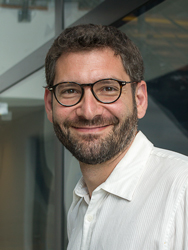
Marios Kountouris, EURECOM, France
Biography: Marios Kountouris is a Professor and a Chair on Advanced Wireless Systems at the Communication Systems department, EURECOM, France. He received the Diploma degree in Electrical and Computer Engineering from the National Technical University of Athens (NTUA), Greece in 2002, and the M.S. and Ph.D. degrees in Electrical Engineering from Télécom Paris, France in 2004 and 2008, respectively. Prior to his current appointment, he has held positions at CentraleSupélec, France, Huawei Paris Research Center, France, The University of Texas at Austin, USA, and Yonsei University, S. Korea. He has received several career and best paper awards, including the 2016 IEEE ComSoc CTTC Early Achievement Award, the 2013 IEEE ComSoc Outstanding EMEA Young Researcher Award, and the 2012 IEEE SPS Signal Processing Magazine Award. He has served as Editor for the IEEE Transactions on Wireless Communications, the IEEE Transactions on Signal Processing, and the IEEE Wireless Communication Letters.
Title of keynote talk: A New Perspective on Goal-oriented Semantic Communication in the Era of Networked Intelligence
Abstract: Future communication systems will cater to emerging cyber-physical and decentralized interactive systems, such as swarm robotics, self-driving vehicles, and smart IoT. The interconnection of myriad sensing- and learning-empowered devices will underpin the global functioning of our societies, enabling formidable progress at various sectors. The realization of this euphoric dream however hinges upon networks’ ability to deliver on an unprecedented number of highly demanding requirements. As we move into the era of distributed networked intelligence, a fundamental paradigm shift is necessary to satisfy the pressing needs for reliable real-time communication, autonomous decision-making, and timely distributed processing. In this talk, we introduce effective goal-oriented communication, which entails an application/context-dependent, non-separable optimization of information generation, transmission, and utilization, via the semantics of information, i.e., the significance and the usefulness of messages with respect to the goal of data exchange. We highlight fundamental concepts, essential principles, and key functionalities required for effectively conveying only information representations and features, which are timely, relevant, and valuable for achieving end users’ goals. Finally, we discuss the potential and the technical challenges associated with this promising avenue of research.
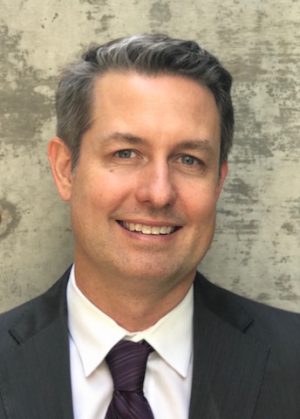
Jeff Andrews, University of Texas at Austin, USA
Biography: Jeffrey Andrews is the Truchard Family Endowed Chair in Engineering at the University of Texas at Austin where is Director of 6G@UT. He received the B.S. in Engineering with High Distinction from Harvey Mudd College, and the M.S. and Ph.D. in Electrical Engineering from Stanford University. Dr. Andrews is an IEEE Fellow and ISI Highly Cited Researcher and has been co-recipient of 15 best paper awards including the 2016 IEEE Communications Society & Information Theory Society Joint Paper Award, the 2014 IEEE Stephen O. Rice Prize, the 2014 and 2018 IEEE Leonard G. Abraham Prize, the 2011 and 2016 IEEE Heinrich Hertz Prize, and the 2010 IEEE ComSoc Best Tutorial Paper Award. His other major awards include the 2015 Terman Award, the NSF CAREER Award, the 2021 Gordon Lepley Memorial Teaching Award, the 2021 IEEE ComSoc Joe LoCicero Service Award, the IEEE ComSoc Wireless Communications Technical Committee Recognition Award, and the 2019 IEEE Kiyo Tomiyasu technical field award.
Title of keynote talk: Unlocking new capacity in 6G cellular systems via site-specific ML-aided design
Abstract: 6G cellular networks will be extremely complex systems that must meet many competing requirements in a large variety of environments and use cases. A key enabling 6G technology will be deep learning, which can unlock previously hidden system-level gains, particularly by effectively learning custom site-specific communication techniques that are optimally adapted for each cell-site. I will present a short summary of some of my group’s recent discoveries and technologies based on deep learning (DL) that demonstrate a large potential impact in 6G. The first is a novel and practical approach for beam alignment in millimeter wave and THz bands that can achieve a phenomenal speed up — at least 10x and in some cases approaching 1000x — by sensing and exploiting unique aspects of the environment. The second is a new architecture for estimating high dimensional channels by harnessing the expressive power of deep generative networks to develop a custom model of each cell’s channel distribution. The third is a site-specific multicell optimization that rapidly learns near-optimal global settings for each base stations antenna arrays, a problem that is completely intractable using conventional techniques. It is trained and tested on AT&T’s commercial simulation platform and shows large gains over existing 3GPP approaches.
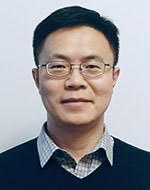
Jianming Lu, Huawei, China
Biography: Jianmin Lu joined the Huawei Technologies in 1999. During the last two decades, he conducted various researches on wireless communications especially on physic layer and MAC layer and developed 3G, 4G and 5G products. He received more than 50 patents during the research. He was deeply involved in 3GPP2 (EVDO/UMB), WiMAX/802.16m and 3GPP (LTE/NR) standardization and contributed several key technologies such as flexible radio frame structure, radio resource management and MIMO. His current research interest is in the area of signal processing, protocol and networking for the next generation wireless communication. He is currently Executive Director of Huawei Wireless Technology Lab.
Title of keynote talk: Key vision and technology trends for the future wireless network
Abstract: 5G has been deployed rapidly to large scale commercialization, and ITU-R is leading the consortium effort to study future technology trend (FTT) and 6G vision for 2030. In our view, 6G will go far beyond communications. In addition to connected people and things, we predict that 6G will be the platform for connected intelligence, where the mobile network connects vast amounts of intelligent devices and connects them intelligently. This talk will present an overall vision for 6G with drivers, use cases, KPIs, roadmap and key capabilities. Six key capabilities: (1) Extreme connectivity, (2) Native AI, (3) Networked sensing, (4) Integrated Non-terrestrial network, (5) Native trustworthiness and (6) Sustainability, will be further discussed, including potential technologies/research directions and associated challenges.
